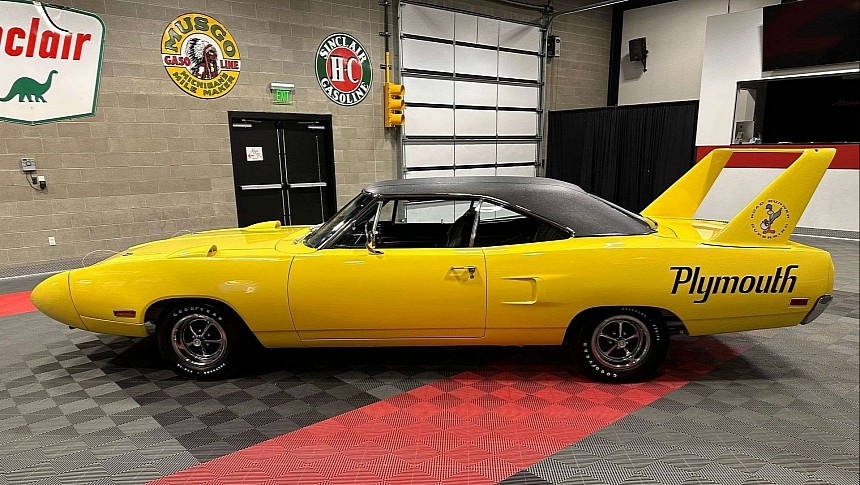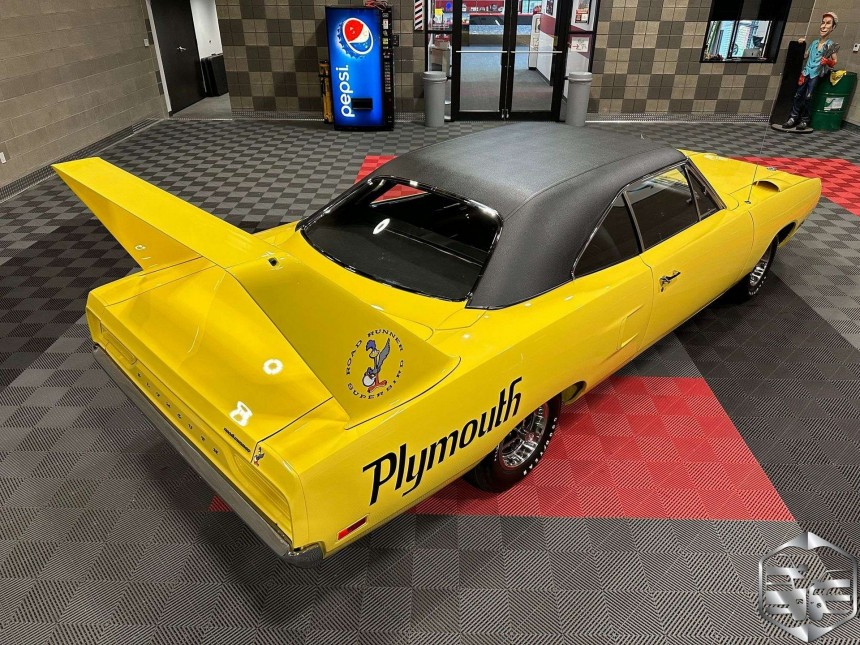In the NASCAR Hall of Fame, Richard Petty has a very long list of trophies, wins, championships, and achievements. Chrysler and General Motors racecars accompany the vast majority of his motoring accomplishments. The notable exception is 1969 when The King ran for Ford after the brass at Mopar refused to give him a Plymouth with the aerodynamics of the Charger Daytona. Incidentally, Ford took the championship that year – but not with Petty – and Chrysler relented and gave in to the request. In 1970, the Plymouth Road Runner Superbird emerged as the identical twin of the winged Dodge from a year before.
The Superbird was a limited-series high-performance machine, and the mandatory homologation production was halted at 1,935 units. At least, this is the most vehiculated figure among the various sources available. Still, other values have been mentioned over the years. Whatever the actual production volume was, one thing is sure – it spins around the 2,000-unit mark.
For a one-year-only automobile with such an aura, it makes perfect sense that the remaining examples are extremely valuable. Naturally, the top-rated on the money scale are the original survivors, with restored ones coming in second, provided they are all-numbers matching. With untouched Superbirds fetching seven digits at public sales, high prices are typical in this super-narrow niche, even for renovated examples.
Take the car featured in the gallery as a yardstick: a rotisserie restoration completed with microscopic accuracy and attention to detail. Even the factory under-spray was replicated when the fresh coat of Lemon Twist Yellow livery was applied - see it in the second video below (but look carefully).
The best part about it? The business end – hosting a 426 cubic-incher, the 7.0-liter hemispherical combustion chambers V8 megalodon. It's the original HEMI installed on December 2, 1969, and it is mated to one of the 77 automatic transmissions installed in the Superbirds.
The vast majority of winged Road Runners came with a 440 Magnum V8 (either the regular four-barrel or the torque-nuke Six-Barrel), but 135 got the 425-hp, 490-lb-ft (431 PS, 664 Nm) hemi-god. Curiously, the HEMI Superbirds were preferred with the three-speed Torqueflite automatic transmission, somewhat against the current tendency. Usually, the high-performance motor was ordered with a manual four-speed gearbox, regardless of its application (be it Dodge or Plymouth).
The rear is a Sure-Grip 8.75-inch with a 3.55 ratio, and the 'Bird comes with power steering and power-assisted brakes with discs on the front. The documentation accompanying the car contains over 600 photos from its inspection and validation before the restoration and the extensive work done to bring it to its current condition.
After that extensive project was completed in May 2012, the car was driven only 50 miles (80 km) over its original 20,855 miles/33,555 km (title exempt). It was also sold two months ago, on October 21, 2023, for $528,000. It was withdrawn from the Mecum Las Vegas auction three weeks later. However, it will go under the hammer (with no reserve) at the Barrett-Jackson event in Scottsdale, Arizona, on January 20-28.
For a one-year-only automobile with such an aura, it makes perfect sense that the remaining examples are extremely valuable. Naturally, the top-rated on the money scale are the original survivors, with restored ones coming in second, provided they are all-numbers matching. With untouched Superbirds fetching seven digits at public sales, high prices are typical in this super-narrow niche, even for renovated examples.
Take the car featured in the gallery as a yardstick: a rotisserie restoration completed with microscopic accuracy and attention to detail. Even the factory under-spray was replicated when the fresh coat of Lemon Twist Yellow livery was applied - see it in the second video below (but look carefully).
The vast majority of winged Road Runners came with a 440 Magnum V8 (either the regular four-barrel or the torque-nuke Six-Barrel), but 135 got the 425-hp, 490-lb-ft (431 PS, 664 Nm) hemi-god. Curiously, the HEMI Superbirds were preferred with the three-speed Torqueflite automatic transmission, somewhat against the current tendency. Usually, the high-performance motor was ordered with a manual four-speed gearbox, regardless of its application (be it Dodge or Plymouth).
The rear is a Sure-Grip 8.75-inch with a 3.55 ratio, and the 'Bird comes with power steering and power-assisted brakes with discs on the front. The documentation accompanying the car contains over 600 photos from its inspection and validation before the restoration and the extensive work done to bring it to its current condition.
After that extensive project was completed in May 2012, the car was driven only 50 miles (80 km) over its original 20,855 miles/33,555 km (title exempt). It was also sold two months ago, on October 21, 2023, for $528,000. It was withdrawn from the Mecum Las Vegas auction three weeks later. However, it will go under the hammer (with no reserve) at the Barrett-Jackson event in Scottsdale, Arizona, on January 20-28.


































